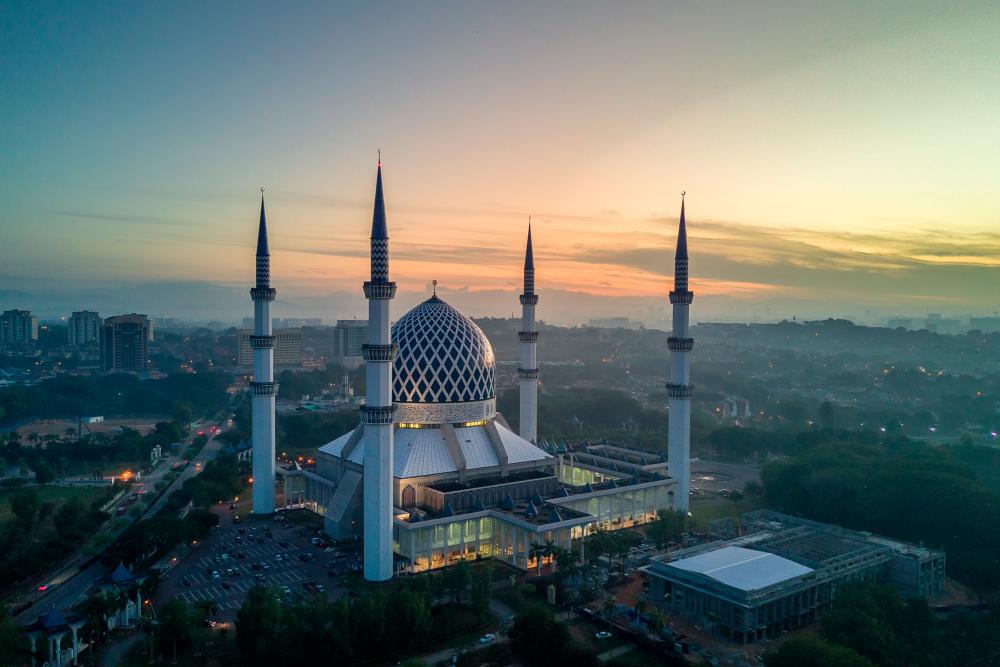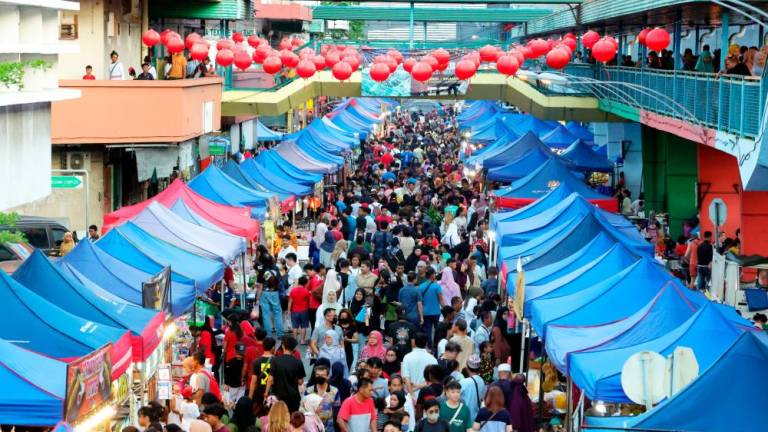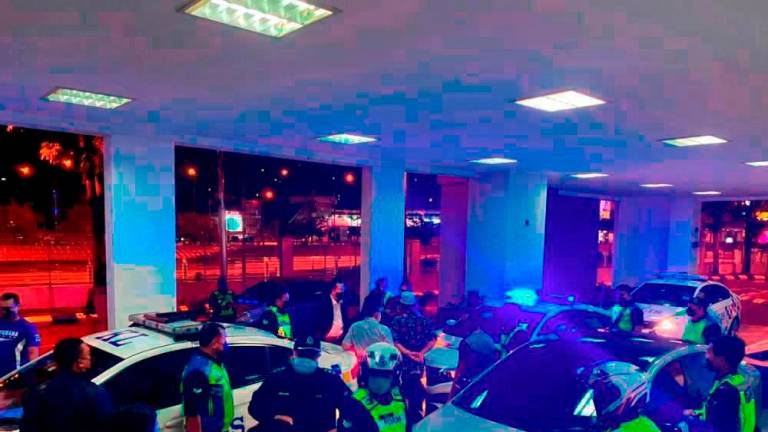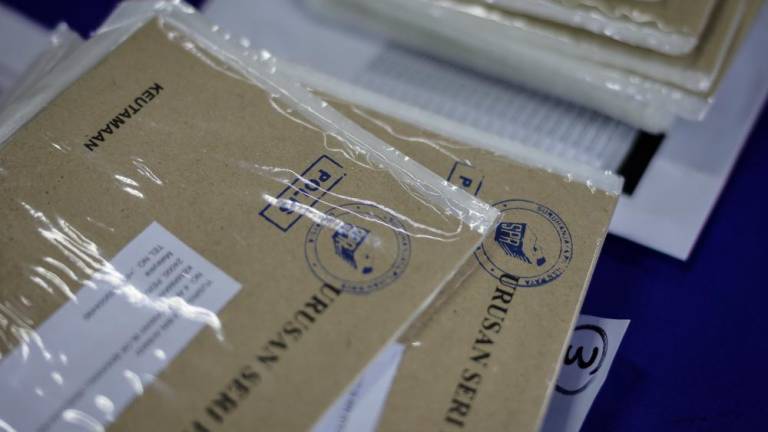SELANGOR is unique and rich, with a dynamic balance between tradition and modernity from its architecture, location and history. Amid the bustling cities and serene landscape are many Islamic buildings, large monuments and majestic mosques that have been built for centuries. As we guide you through this article, discover the significance and beauty of eight selected mosques and Islamic monuments in Selangor.
Sultan Salahuddin Abdul Aziz Shah Mosque, Shah Alam
In Selangor, the Sultan Salahuddin Abdul Aziz Shah Mosque, popularly referred to as the Blue Mosque, is regarded as an iconic landmark. It was built between the years 1983 and 1987 and launched by Sultan Salahuddin Abdul Aziz Shah in 1988. In addition to being the biggest mosque in Malaysia, this magnificent mosque held the Guinness World Record for having the world’s tallest minaret (a tall tower attached to or next to a mosque) in August 1993.
The mosque’s stunning architecture is a combination of traditional and modern – with Middle Eastern and traditional Malay design elements. It is equipped with various facilities, such as an Islamic art gallery, a library, religious classes and seminar halls. Additionally, the state mosque can also accommodate up to 24,000 worshippers at a time.
There are four-star hotels near the mosque compound such as The Concorde Hotel (17 minutes away) and Mardhiyyah Hotel (15 minutes away) for tourists to consider staying if they would like to explore the beauty of what the Blue Mosque has to offer.
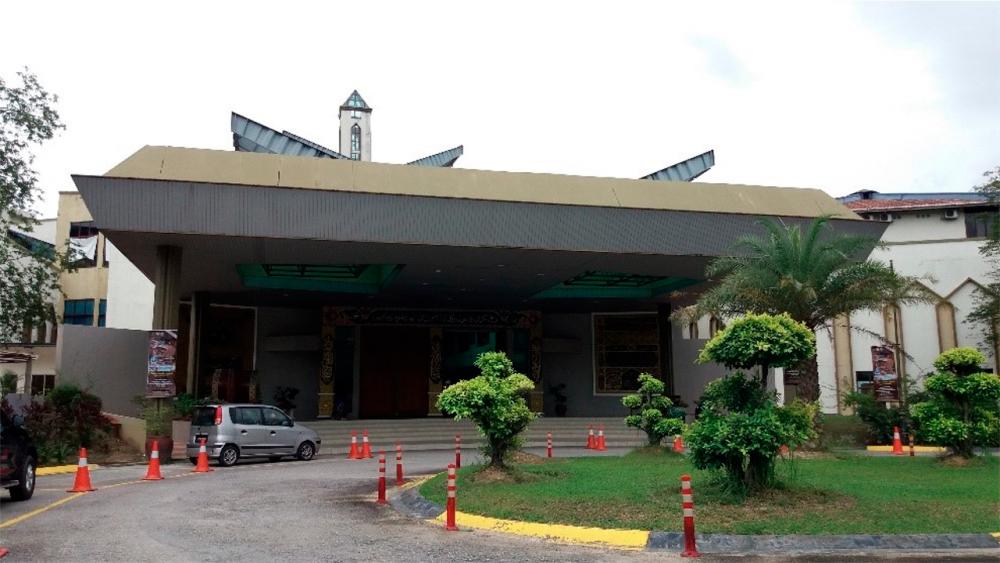
International Islamic Arts Garden Complex, Shah Alam
Connected to the Sultan Salahuddin Abdul Aziz Shah Mosque, the International Islamic Arts Garden Complex is set across 14ha of land in Shah Alam. Located in the centre of Selangor’s Islamic arts heritage, this attraction features displays of Islamic calligraphy, architecture, interior design, paintings and Quran manuscripts. The International Islamic Arts Garden Complex is home to Yayasan Restu, a non-profit organisation that aims to revive, preserve, and promote Islamic arts and culture.
Yayasan Restu also dedicates itself to the reproduction and illustration of artwork based on Islamic designs, as well as the designs of the Quran. Furthermore, the foundation was the first in Malaysia to produce fully handwritten and illuminated Mushaf (hardcopies of the Quran) and held exhibitions in several countries worldwide.
Over 10,000 objects, Islamic illustrations and Malay heritage can be found in the museum and gallery including an original manuscript of the Quran worth RM20 million. The garden complex is also within walking distance of the Blue Mosque and the Shah Alam Lake.
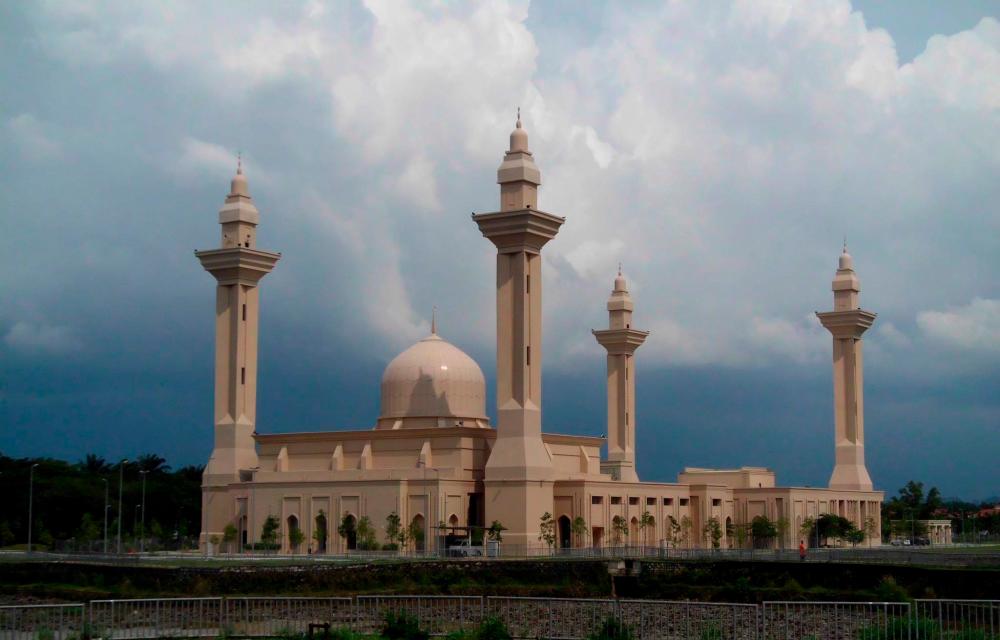
Tengku Ampuan Jemaah Mosque, Bukit Jelutong
Masjid Tengku Ampuan Jemaah in Bukit Jelutong, Shah Alam is the second state mosque of Selangor, after Sultan Salahuddin Abdul Aziz Shah Mosque. This beautiful sand-coloured mosque was named after the late Armarhumah Tengku Ampuan Jemaah of Selangor, the second Queen of Malaysia.
With elements of Malaysian design influencing the interiors, the architecture bears a strong resemblance to that of the Al-Masjid Al-Haram in Makkah, Saudi Arabia. This mosque, which can fit 5,000 worshipers, is situated in a tranquil lakeside setting. In addition, the Tengku Ampuan Jemaah Mosque offers a lecture hall, a purpose hall that can serve over 350 people at once and a library with 3,500 copies of books appropriate for readers of all ages.
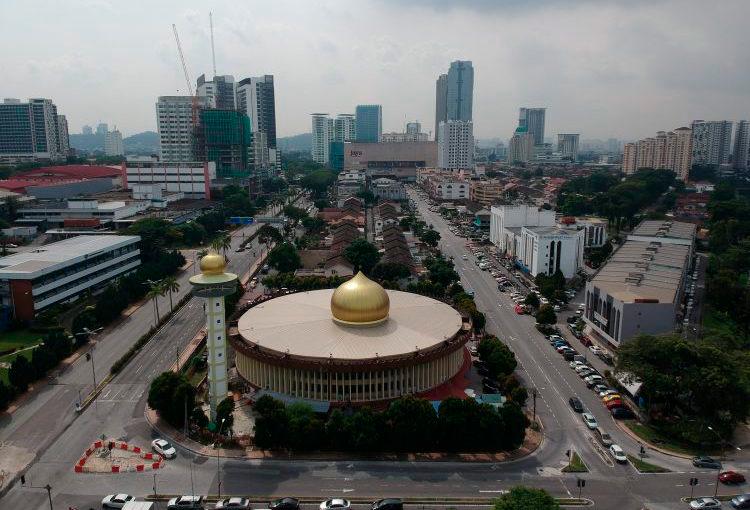
Tun Abdul Aziz Mosque, Petaling Jaya.
Tun Abdul Aziz Mosque, Petaling Jaya
Surrounded by the hustle and bustle of the city centre, Tun Abdul Aziz Mosque, also known as The Round Mosque (Masjid Bulat) is among the biggest mosques in the city of Petaling Jaya and widely known for its unique design. The mosque’s name was inspired by and picked in honour of the fourth Chief Minister of Selangor, Tun Abdul Aziz who served in 1955.
The mosque’s interior walls are surrounded by Arabian carvings and feature a modern architecture. The mosque has three levels so it is not a problem for worshippers to come and find cosy spaces to be in prayer. Ample facilities are available for people of all ages such as classrooms, accessible elevators for the elderly and disabled, small shops and a bus stop.
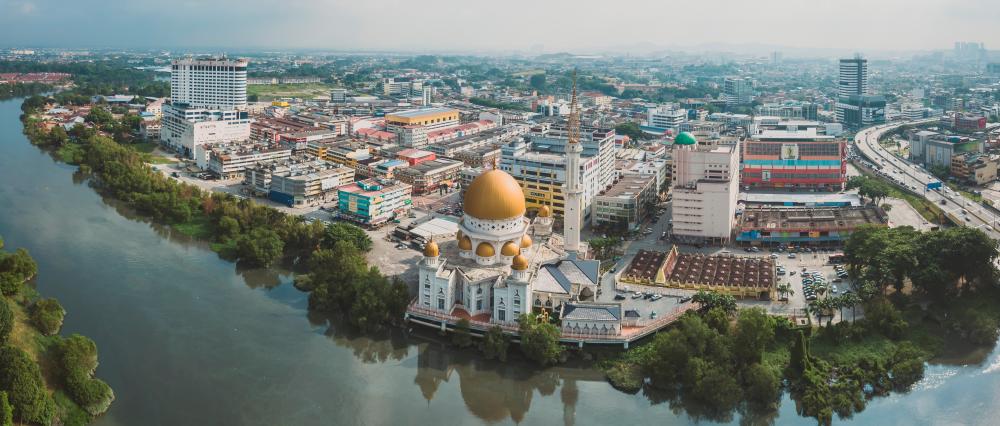
Sultan Sulaiman Royal Mosque, Klang
The Sultan Sulaiman Royal Mosque located in Jalan Kota Jaya, Klang has a one-of-a-kind history in the state of Selangor for its unique interior design. The interior of the mosque was designed in 1932 using bas-relief style and mural drawings. The art drawings also used some bright colours such as red and yellow to represent the colours of Selangor’s flag, while adding a sky blue and green landscape that symbolises the Selangor’s tranquil scenery.
Inside the mosque, there are around 70 bas-relief or low relief, which is a technique that makes the image appear to be floating on the surface of a flat area, such as on coins. These drawings are important and unique since it is the only mosque in Malaysia with these characteristics. Other attractive features are the Royal Stairs (Tangga Diraja) from Alam Shah Palace and a Royal Mausoleum where the late Sultan Salahuddin is laid to rest.
Additionally, tourists can visit other attractions near the mosque, such as Alam Shah Palace (12 minutes away) and Sultan Abdul Aziz Royal Gallery (14 minutes away). There are multiple bus stops for anyone who would like to travel by using public transportation and it is only a 5-minute walk from the bus stop to the mosque.
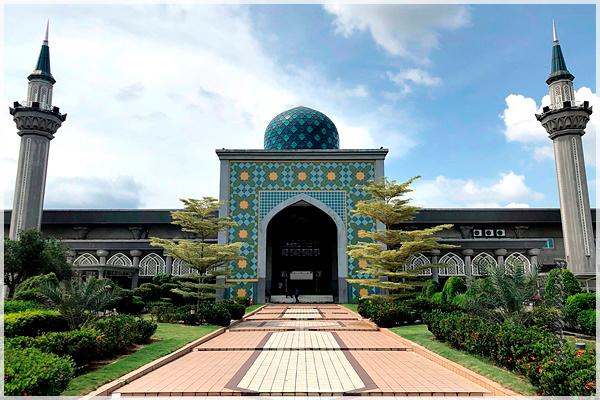
Sultan Abdul Samad Mosque, Sepang. – ALL PICS COURTESY OF TOURISM SELANGOR
Sultan Abdul Samad Mosque, Sepang
Sultan Abdul Samad Mosque, also known as the KLIA Mosque, is located only 10 minutes away from Kuala Lumpur International Airport (KLIA) and Kuala Lumpur International Airport II (KLIA2). Since the airport was built, numerous new townships have been developed nearby to support the administration and management of the two international airports. As a result, it is regarded as one of the best modern airports in the area.
The mosque was named Sultan Abdul Samad in honour of the fourth Sultan of Selangor in 1857. The Sultan Abdul Samad Mosque is renowned for its vivid green and blue exterior. The bunga kantan or ginger flower, is a local herb flower that served as the model for this particular mosque.
The mosque’s layout design symbolically represents the Islamic star, crescent emblem and the glass colourful clerestory windows surrounding the lower part of the dome add some finesse to the mosque.
Aside from its exterior floral concept, which lets in natural light that follows the sun’s shifting angles and produces a floral shadow inside the prayer hall. At night, when the dome lights up, it forms the shape of a lantern, which serves as a beacon for onlookers and visitors who pass by.
A variety of amenities are prepared for visitors when visiting this mosque such as ample parking space, wheelchair facilities and an indoor playground for children. The Movenpick Hotel (5 minutes away) and Mitsui Outlet Park KLIA (25 minutes away) are both conveniently located near the mosque.
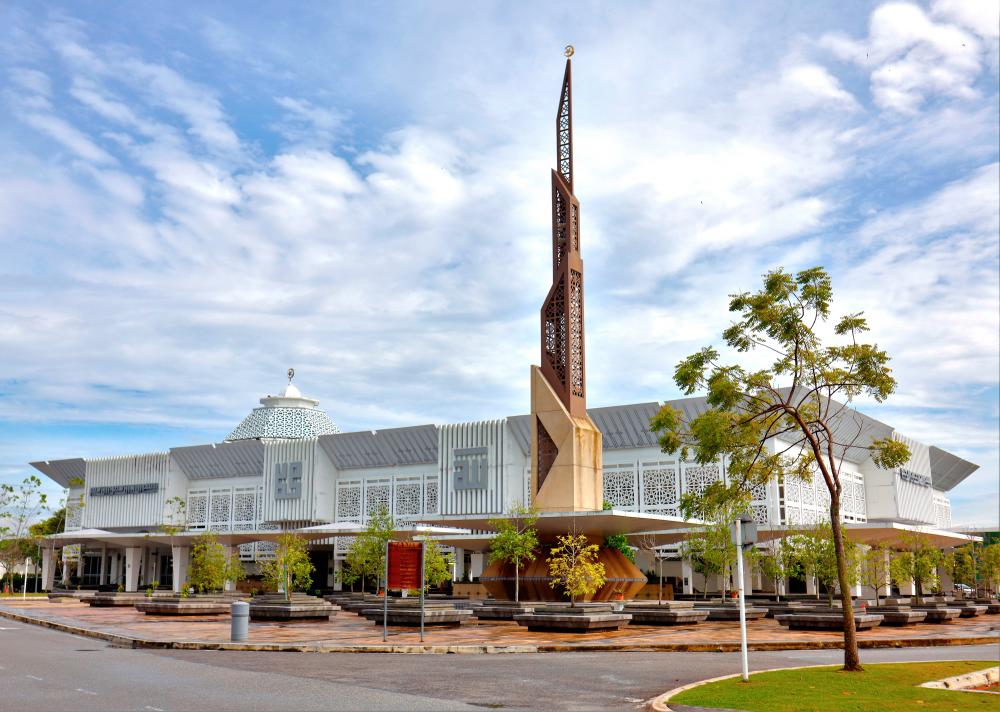
Haji Fisabililah Royal Mosque, Cyberjaya
Located in Cyberjaya, Masjid Raja Haji Fisabililah was designed with a sustainable structure that will serve as an inspiration for the planning and construction of mosques in Malaysia to come. Completed in 2015, this specific mosque will be among the first in the world to sign up for the Malaysia’s Feed in Tariff program and use solar power to generate electricity. The Cyberjaya Mosque’s name was inspired by a Bugis warrior, Raja Haji Fisabilillah, who defeated the Dutch army in Malacca.
With recyclable materials and energy-efficient equipment to minimise energy usage and lower operating costs, the design complied with the highest rating level set by the Green Building Index Standard.
In addition, a host of amenities are offered to guarantee the comfort of the 8,300 guests and worshippers, including a glass lift, stairwells and a moving walkway or travelator, available for use by worshippers of all ages.
A few bus stops are situated around the mosque’s common area for guests who choose to use public transport. Furthermore, the mosque’s interiors incorporate elements of traditional Malay art and design. The mihrab (a niche or a chamber in a mosque indicating the direction of prayer) and minbar (a pulpit in a mosque usually shaped like a small tower, where the imam stands to deliver sermons) were crafted by local craftsmen, featuring geometric Arabic patterns, names of God and also the Prophets.
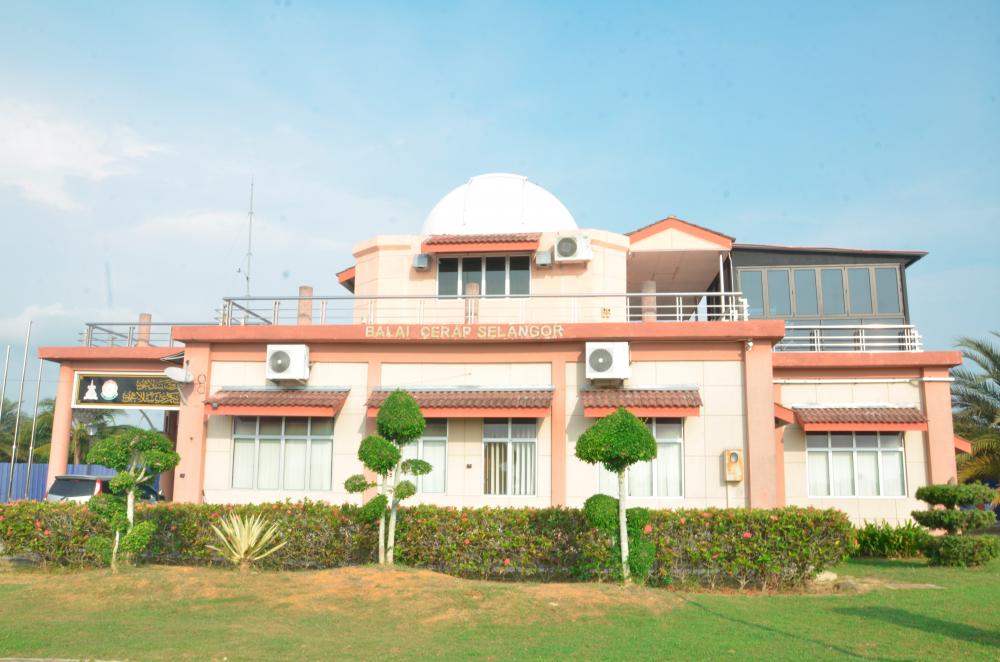
Selangor Observatory, Sabak Bernam
Selangor Observatory is a research and development centre for astronomy in Sabak Bernam provided by the Selangor State Mufti Department. Through cooperation from various institutions and government departments such as the Department of Survey and Mapping Malaysia, Space Science Studies Division, the University of Malaya, Department of Islamic Development Malaysia and Selangor’s International Islamic University College, Selangor Observatory carries out astronomical activities such as observing the moon, stars, planets, constellations, comets or meteors to obtain the latest information on any changes of objects in the sky that can affect the celestial system.
Moreover, Selangor Observatory is in charge of performing the official crescent observations during Ramadan, Syawal and Zulhijjah as well as monthly observations on the 29th of each month in a year. Selangor Observatory provides a wide centre for education, training and spreading da’wah (the preaching of Islam and the persuasion to submit to Allah) through astronomy courses or seminars as an effort to spread knowledge and skills.



